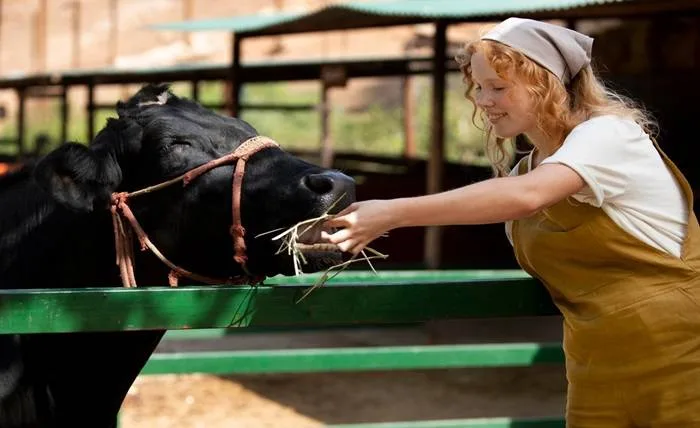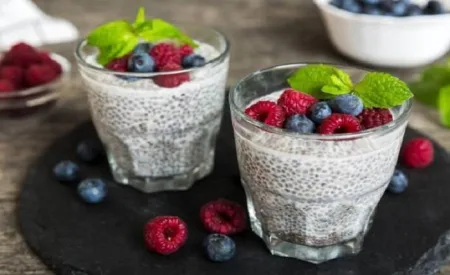For a long time, the notion of generic animal feeds being universally suited for meeting all nutritional requisites has prevailed among livestock producers. However, emerging research reveals that tailored dietary strategies focused on individual creatures’ biological uniqueness actually better promote health markers like growth rates, output volumes, and general wellness resilience even within the same livestock categories.
Understanding Limitations of Generic Feeds
While administrative motives incentivize mass-produced, uniformly composed feed-based rearing practices, generalized approaches often undermine elemental biochemical individuality principles across living organisms and fail to accommodate variability.
Health Issues: Feeds designed using averaged nutritional requirements data sets often prove incompatible for select creature constitutions despite the same breed or age. Adverse reactions frequently manifest as acute allergies, toxicity from unsafe ingredient levels, or long-term pathologies, as formulations disregard absorption rate differences. These deficiencies get dismissed as one of the instances rather than outcomes of diet uniformity.
Conversion Inefficiencies: With nutrient needs getting oversimplified, single feed reliance risks ingredients within compositions remaining under or unutilized due to a dearth of certain digestive enzymes innately across sub-populations. Such nutrient wastage, termed ʻegestionʼ, negatively affects input ROI, footprint costs, and environmental burdens due to volume spillovers.
Mortality Spikes: While headline growth, productivity, and survival rates showcase consistency, underlying statistical anomalies of assumed formula unsuitability for segregated specimens remain masked by aggregated performances but adversely affect individual welfare. Thus, commercial feeding uniformity gravely overlooks dietary personalization, which creature-specific customization reveals and resolves holistically when embraced.
The Rise of Customized Feeds
Gratifyingly, astute farmers now acknowledge that nutrition is as unique as fingerprints within creature populations of the same age or genre warranting consideration. Natural animal feed ingredients aligned to digestion capacities and body constitutions have manifold benefits:
Enhanced Health and Animal Welfare: Structuring feeds optimized to individual genetic potential allows livestock to develop rightly mitigating allergy or toxicity triggers. This minimizes mortality rates alongside boosting longevity and output consistency across flocks.
Greater Feed Efficiency: With absorption rates heightened within correctly assigned ingredient tolerance levels, better feed conversion translates to lower input volumes needed per unit of commercial output, be it milk, eggs, or meat.
Lower Feed Costs: Enhanced assimilation and growth predictability permit budgeting optimization based on group/season. This saves piles of earlier spoiled by average wasting.
Natural Feed Ingredients: Nutritional Benefits
Further boosting custom feed precision for elevated livestock welfare involves including certain botanical bioactive substances like garlic, thyme, or yucca in formulations. These harmonize with inherent individual animal physiological conditions, conferring positive responsiveness.
Botanical Bioactives Mode of Action
Instead of providing standalone nutrients, natural feed additives like garlic exert prebiotic effects upon digestive systems via multiple pathways:
- Stimulated Enzyme Secretions: Elements enhance foregut microbial fermentation and endogenous enzyme secretions, enhancing feed decomposition and absorption.
- Augmented Immunity: Compounds like carotenoids, polysaccharides, and specialist fatty acids bolster natural immunity, allowing animals to stay healthy. This minimizes losses.
- Targeted Ailments Alleviation: Ingredients chosen for specific anti-inflammatory, analgesic, or antioxidant properties provide targeted relief from common issues each livestock category faces, from joint pains in poultry to bloating in cattle.
Thus, natural supplementation amplifies feed utility.
Tailoring Feeds Using Natural Ingredients
While mass market feeds meet herd average general requirements, producers seeking elevated stock welfare look towards customization by:
Choosing Equilibrium: Establishing ingredient tolerance levels across animals through controlled feed trials allows for the determination of sweet spots that balance commercial viability and creature comfort.
Gap Analysis: Periodic nutritional deficiency diagnosis guides precision augmentation with natural elements to fill shortfalls.
Lifecycle Suitability: Custom-adjusting macro and micronutrient ratios aligned to species growth stages optimize inputs for actual needs.
Continual feed testing is critical for ensuring rightly personalized compositions stay relevant, adjusting for the seasonal, climate, or infection-led dietary shifts needed. This minimizes mortality and treatment costs, improving sustainability.
Success Stories with Customized Feeding
The commercial gains from customized natural feeds are substantiated statistically across several case studies where reformulation boosted lagging productivity and welfare metrics:
One UK cattle farmer struggling with impacting highly contagious bovine TB infections causing above 20% mortality turned fortunes after testing revealed the need for elevated protein-packed feed with balancing micronutrient levels. This boosted immunity and cushioned losses by over 87% despite external outbreaks continuing, indicating feed inadequacy alone was at fault earlier.
Another broiler farm in Malaysia is grappling with heat stress-related symptoms due to suboptimal diet constitution and density conditions. Meat quality is deteriorating, and buyers are complaining. However, adjusting spacing standards and customizing feed nutrition increased digestibility, enhanced ventilatory efficiency, and reduced mortality rates by over 64% within two flock cycles, indicating margins correlate directly with welfare focus.
Moving Ahead: Overcoming Barriers to Customized Feeding
Despite recognizing clear merits in personalized feeding strategies, several bottlenecks constrain widespread customized natural feeds adoption:
Perceived Higher Costs: Producers dismiss tailor-made feeds, fearing elevated overheads despite potential profit gains outweighing investments. Building awareness of actual viability attracts trials.
Formulation Complexity: The precise nutritional calibration and inclusion of natural bioactive elements seem daunting when motivating requisite investments in specialized team training. However, collaborating with expert nutritionists simplifies this.
Monitoring Intricacy: The continual testing and tight outcome tracking essential for feed adjustments appear exhaustive upfront. However, template measurement tools offered by veterinarian partners progressively improve precision feeding.
While transition prospects seem expansive initially, custom feed profits evidenced alongside external specialists supporting simplified implementation are convincing farmers that easy wins are feasible. Healthy animals signal healthy food ecosystems that benefit every production link, including consumers and our communities. So, focus rightly deserves this shift.



